What's New
Displaying results 111 - 120 of 4899
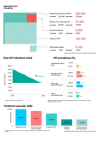
Resource | Reviews and Snapshots,
The country snapshot prepared by UNAIDS’ HIV and AIDS Data Hub for Asia Pacific provides comprehensive information on the HIV epidemic and response in Cambodia. Download the country snapshot to find out the most up-to-date HIV data and analysis.
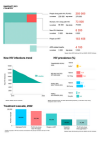
Resource | Reviews and Snapshots,
The country snapshot prepared by UNAIDS’ HIV and AIDS Data Hub for Asia Pacific provides comprehensive information on the HIV epidemic and response in Bhutan. Download the country snapshot to find out the most up-to-date HIV data and analysis.
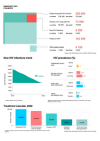
Resource | Reviews and Snapshots,
The country snapshot prepared by UNAIDS’ HIV and AIDS Data Hub for Asia Pacific provides comprehensive information on the HIV epidemic and response in Bangladesh. Download the country snapshot to find out the most up-to-date HIV data and analysis.
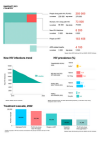
Resource | Reviews and Snapshots,
The country snapshot prepared by UNAIDS’ HIV and AIDS Data Hub for Asia-Pacific provides comprehensive information on the HIV epidemic and response in Afghanistan. Download the country snapshot to find out the most up-to-date HIV data and analysis.
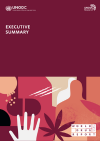
Resource | Publications,
Drug use continues to be high worldwide. In 2021, 1 in every 17 people aged 15–64 in the world had used a drug in the past 12 months. The estimated number of users grew from 240 million in 2011 to 296 million in 2021 (5.8 per cent of the global population aged 15–64). This is a 23 per cent increase, partly due to population growth. Cannabis continues to be the most used drug, with an estimated 219 million users (4.3 per cent of the global adult population) in 2021. Use of the drug is increasing and although globally cannabis users are mostly men (about 70 per cent), the gender divide is reducing in some subregions; women account for 42 per cent of cannabis users in North America.
It is estimated that in 2021, 36 million people had used amphetamines, 22 million had used cocaine and 20 million had used “ecstasy”-type substances in the past year. The proportion of female users is higher in the case of amphetamine-type stimulants (45 per cent of users are women) and non-medical use of pharmaceuticals (between 45 and 49 per cent of users are women), whereas the highest share of men is found in users of opiates (75 per cent) and cocaine (73 per cent). Opioids continue to be the group of substances with the highest contribution to severe drug-related harm, including fatal overdoses. An estimated 60 million people engaged in non-medical opioid use in 2021, 31.5 million of whom used opiates (mainly heroin).

Resource | Publications,
Two decades ago, the global AIDS pandemic seemed unstoppable. More than 2.5 million people were acquiring HIV each year, and AIDS was claiming 2 million lives a year.
UNAIDS data show that today, 29.8 million of the 39 million [33.1 million–45.7 million] people living with HIV globally are receiving life-saving treatment. An additional 1.6 million people received HIV treatment in each of 2020, 2021 and 2022.
The path to ending AIDS is clear. We have a solution if we follow the leadership of countries that have forged strong political commitment to put people first and invest in evidence-based HIV prevention and treatment programmes.

Resource | Publications,
Insights from Indonesia, Thailand, and the Philippines, is a situational analysis developed by Youth LEAD to explore the healthcare inclusion of transgender youth in the Asia- Pacific, particularly in Indonesia, Thailand, and the Philippines. This study was conducted as a formative research in understanding the challenges and opportunities on good practices of transgender health for youth and proposing culturally-appropriate recommendations. This study was conducted under the partnership umbrella between Youth LEAD and Asia Pacific Transgender Network (APTN), under the Project “Transcending Borders: Strengthening trans and gender diverse movements towards transformative leadership, legal protection and trans-competent healthcare in Asia-Pacific and Africa” funded by the Robert Carr Fund (RCF).

Resource | Publications,
The “Engagement of Youth in the Country Coordinating Mechanism and Global Fund Processes in the Asia-Pacific” situation analysis is an advocacy tool for young key populations across the Asia-Pacific region. This is the product of Youth LEAD, the Asia-Pacific Network of young key populations, developed with the technical assistance of Frontline AIDS; a partnership of organizations working with communities in more than 100 countries, taking local, national and global action on HIV, health and human rights and financially supported by the Global Fund Community Engagement Strategic Initiative. All rights reserved. Publication of the Youth LEAD can be obtained from the Youth LEAD website (youth-lead.org) and official address below. Requests for the permission to reproduce or translate Youth LEAD publications- for noncommercial distribution only- should be addressed to the Youth LEAD Secretariat.
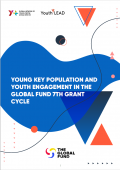
Resource | Publications,
The “Young Key Population and Youths Engagement in the Global Fund 7th Grant Cycle” is an engagement tool for youth-led organizations and Country Coordinating Mechanisms (CCM) across Asia-Pacific countries in supporting their process of submitting Global Fund funding requests.
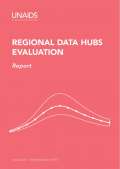
Resource | Publications,
About this Evaluation
UNAIDS Independent Evaluation Office requested an evaluation of the regional Data Hubs in order to understand and explore: History of the creation and implementation of the regional Data Hubs. The existing programmatic and technical design and implementation of the Data Hubs. The implicit theory of change, i.e., how the Data Hubs are intended to support and link to UNAIDS larger Mission and Global Strategy. Recommendations for the future of the Data Hubs.





